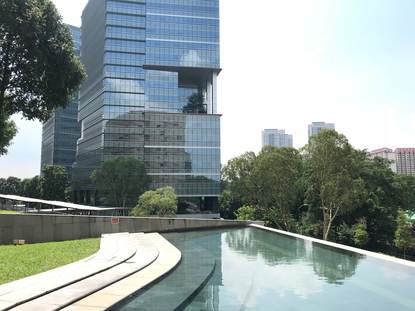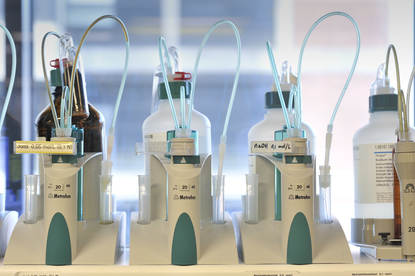Photo From left to right: Jalene Poh, Anne Taams, Cynthia Sung, Marc Maliepaard, Marjon Pasmooij and Adena Lim.

For my masters, I had the exciting opportunity to do a 6-month research internship at the Medicines Evaluation Board (MEB) and Health Science Authority (HSA) as part of a collaboration between the 2 agencies.
Ethnicity is flying under the radar
The first 2 months, I worked at the MEB and investigated the availability of safety data, in particular - adverse events - in ethnic populations and their specifics in a selection of authorisation dossiers and public documentation of the European Medicines Agency (EMA): European Public Assessment Reports (EPARs) and Summary of Product Characteristics (SmPCs).
Specific safety data per ethnic population is available
We concluded that although we have specific safety data, for instance adverse events per ethnic population, available in almost all authorisation dossiers, most of these safety data are lost or not well-translated into the EPARs and SmPCs.
In many cases, even ethnicities included in phase 3 trials seen in dossiers, such as Caucasian, African, or Hispanic, were suddenly not reported in abridging documents like EPAR and SmPC. This may have to do with the fact that mostly no effect was noted or no strong conclusions regarding safety in ethnic populations could be drawn. However, prescribers reading these public documents may not know these facts.
We assessed what would be in best in the interest of awareness of these factors for prescribers and, in the end, for patients. Therefore, we propose to specifically mention the ethnicities and population size as researched in clinical trials in EPARs and SmPCs, so that prescribers can make a balanced opinion for patients’ drug therapy. Our conclusion fits nicely with “Improving communication about drugs to prescribers and consumers”, a great topic in the 1st edition of the Regulatory Science Magazine.
Health Science Authority in Singapore
During the next 4 months, I went to Singapore to work at HSA’s department of Vigilance and Compliance Branch. Diabetes is a significant problem in Asia. Many patients are therefore treated with antidiabetic medications. In HSA’s databases, several severe AEs were documented for two classes of type 2 diabetic drugs, dipeptidyl peptidase-4 (DPP4) and sodium/glucose cotransporter 2 (SGLT2) inhibitors. At the MEB I had found a large amount of safety data for people of Caucasian and Asian descent in the authorisation dossiers. The question arose whether Asians would be more prone to certain adverse drug reactions than Caucasians.
Finally, I concluded that there are no differences in safety responses for Asian people compared to Caucasian regarding these drugs. However, an improved model, enhanced pharmacogenomics and - in general - more Asians included in phase 3 trials, are required for further analysis.
I look back on an amazing experience in regulatory science and pharmacovigilance in both the Netherlands and Singapore. Many thanks to my supervisors for all their efforts!












